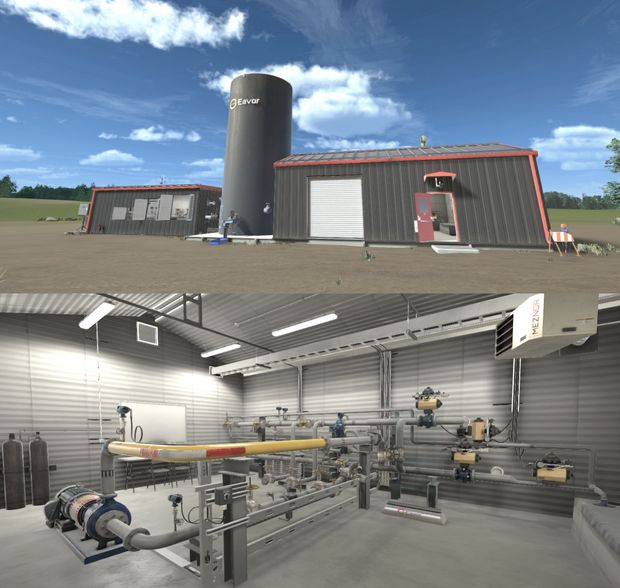BP and Chevron have made a landmark expansion into geothermal energy on Tuesday, betting on a new technology that could prove to be the world’s first scalable clean energy derived from a constant source: the natural heat of the earth,
The two major oil companies have headlined a $40 million funding round into a Canadian geothermal energy firm called Eavor. Based in Calgary, Eavor has pioneered a new form of technology that could feasibly be deployed in many places around the world.
The investment marks a key move into an area otherwise ignored by energy companies, which have largely looked to wind and solar projects in their efforts to diversify away from fossil fields.
It is the first investment into geothermal energy for BP BP, +6.53% and a re-entry into the field for Chevron CVX, +0.58%, which sold its geothermal assets in 2016.
Eavor has previously only accepted angel investment and venture capital. The $40 million injection will be used to further research and development to help scale the power system to be price-competitive.
“We see Eavor’s potential to be complementary to our growing wind and solar portfolios,” said Felipe Arbelaez, BP’s senior vice president of zero carbon energy. “Technology such as Eavor’s has the potential to deliver geothermal power and heat and help unlock a low carbon future.”
Eavor has developed a new type of geothermal technology that, in very simple terms, creates an underground “radiator.”
The Eavor “Loop” consists of a closed-loop network of pipes installed typically 3 kilometers to 4 kilometers below the earth’s surface, originating and terminating in the same aboveground facility. The pipes are installed using advanced drilling techniques perfected in the oil patch.
Liquid travels in the pipes from the aboveground facility through the hot ambient underground environment, before naturally circulating back to the top of the loop. The hot liquid is then converted into electricity or transferred to a district heat grid.
A major advantage to this type of energy is that it is constant, providing a base load of electricity to a grid system without requiring challenging battery solutions of intermittent wind and solar power.
Shots from a virtual tour of Eavor’s full-scale prototype.
Photo courtesy of Eavor.
Unlike hydroelectricity, which relies on large sources of constant water flow, it is designed to be scaled, and Eavor envisions rigs installed under solar panel fields and in space-constrained regions like Singapore.
Geothermal energy has been around for decades, enjoying a boom period in the 1970s and 1980s before largely falling out of the spotlight in the 1990s. Relying on heat below the surface of the earth, it has long been an attractive proposition for oil-and-gas companies, which have core expertise in below-ground exploration and drilling.
The problem is that conventional geothermal technology relies on finding superhot water sources underground, making them expensive, risky, and rare bets. More recent advances have roots in the shale oil boom, and use fracking techniques to actually create the underground reservoirs needed to generate energy. But this can pose a problem from an environmental and sustainability standpoint.
Eavor’s solution doesn’t require the exploratory risk of traditional geothermal energy or disrupt the earth the way that fracking-style geothermal does.
John Redfern, Eavor’s president and chief executive, told MarketWatch that the system’s predictability, established in field trials in partnership with Royal Dutch Shell RDSA, +5.73%, is repeatable and scalable, making it much like wind and solar installations.
“We’re not an exploration game like traditional oil and gas or traditional geothermal. We’re a repeatable manufacturing process, and as such we don’t need the same rate of return,” Redfern said.
“Before we even build the system, unlike an oil well or traditional geothermal, we already know what the outputs can be. Once it is up and running, it is super predictable,” Redfern said. “Therefore, you can finance these things exactly like wind and solar, with a lot of debt at very low interest rates.”











Add Comment